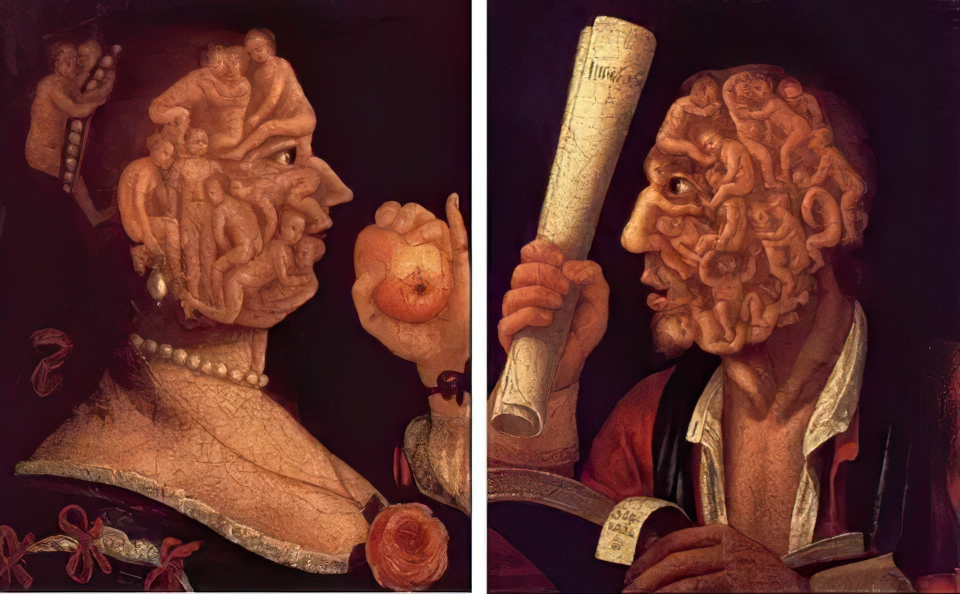Have you ever wondered how unique and fascinating the human species truly is? From our complex brains to our diverse cultural practices, humans are undeniably captivating creatures. In this article, we will dive into the world of interesting facts about humans, exploring everything from extraordinary physical abilities to intriguing psychological phenomena. Whether you are a trivia enthusiast or simply curious about the wonders of our own kind, prepare to be amazed by the extraordinary traits that make us human. So, sit back, relax, and embark on an enlightening journey to discover the incredible peculiarities of our species.
Table of Contents
- Our Fascinating Genetic Makeup Unraveled
- The Mesmerizing Complexity of the Human Brain
- Unlocking the Secrets Behind Our Emotional Quirks
- The Miraculous Capabilities of the Human Body
- Q&A
- The Way Forward

Our Fascinating Genetic Makeup Unraveled
Our fascinating genetic makeup holds the blueprint for who we are and what makes us unique. It’s an intricate combination of inherited traits and complex molecular processes that shape our physical appearance, personality, and even susceptibility to certain diseases. Let’s dive into the intriguing world of genetics and unravel the mysteries behind it!
1. Genetic Variation:
a) SNPs: Single Nucleotide Polymorphisms (SNPs) are the most common type of genetic variation found in humans. These tiny changes in our DNA sequence can impact various traits, from eye color to disease risk. SNPs are like nature’s ‘spelling mistakes,’ where a single nucleotide is replaced by another.
b) Copy Number Variations (CNVs): CNVs involve the deletion or duplication of larger pieces of DNA. These variations can influence the dosage of genes and contribute to conditions such as autism or schizophrenia.
c) Structural Variations: Structural variations encompass larger rearrangements in our DNA, including inversions, translocations, and insertions. These alterations can play a crucial role in evolution and can occasionally lead to genetic disorders.
2. The Human Genome Project:
To understand our genetic makeup better, scientists embarked on the ambitious Human Genome Project (HGP) that spanned from 1990 to 2003. This groundbreaking endeavor aimed to map and sequence the entire human genome, uncovering the approximately 3 billion DNA base pairs that make up our genetic code. The HGP greatly advanced our knowledge of genetics, enabling us to identify disease-related genes, better comprehend inherited conditions, and develop targeted treatments.

The Mesmerizing Complexity of the Human Brain
The human brain is a truly remarkable organ, with its intricacies and capabilities continuously astounding scientists and researchers. It is a complex network of approximately 86 billion neurons, each connected to thousands of others, forming an intricate web of communication. This intricate structure is what enables us to perform various cognitive functions, process information, and experience emotions.
One of the most fascinating aspects of the human brain is its ability to adapt and change, known as neuroplasticity. This phenomenon allows the brain to reorganize itself in response to new experiences, learning, and even recovery from injuries. Our brains are constantly forming new neural connections and pathways, which is crucial for acquiring new skills, improving memory, and even overcoming challenges.
The brain is divided into several regions, each with distinct functions. The prefrontal cortex, located in the front of the brain, is responsible for decision-making, reasoning, and problem-solving. The temporal lobe plays a crucial role in processing auditory information, language comprehension, and memory. Meanwhile, the occipital lobe is primarily responsible for visual processing, allowing us to perceive the world around us. The parietal lobe integrates sensory information and helps form spatial awareness.
Beyond its role in cognition and sensory processing, the brain is also responsible for our emotions and behaviors. The limbic system, often referred to as the “emotional brain,” includes structures such as the amygdala and hippocampus. This system plays a crucial role in memory formation, emotional regulation, and our response to stress and anxiety.
Overall, the human brain is a mesmerizing organ, responsible for the complexities of our existence. Its intricate structure, adaptability, and role in cognition and emotions make it a subject of endless fascination and research.

Unlocking the Secrets Behind Our Emotional Quirks
Have you ever wondered why we react differently to certain situations, or why some emotions seem to dominate our lives more than others? Understanding our emotional quirks is like revealing a hidden map to our own minds that can help us navigate through life with greater self-awareness and emotional intelligence.
1. Identifying Triggers: One of the first steps towards is recognizing the triggers that set us off. These triggers can be people, situations, or even specific words or sounds that evoke strong emotional responses in us. By identifying these triggers, we can gain insight into why we react the way we do and explore healthier ways of dealing with them.
2. Exploring Past Experiences: Our emotional quirks often have deep roots in our past experiences. It is vital to reflect on these experiences to understand why certain emotions are more prominent in our lives. By delving into our past, we can uncover the origin of our emotional responses and gain valuable insight into how they influence our present-day feelings and behaviors.

The Miraculous Capabilities of the Human Body
Our bodies are truly incredible machines, capable of performing astonishing feats. From the moment we are born, our miraculous bodies begin a journey of growth, adaptation, and self-repair. The astonishing capabilities of the human body are a true testament to the wonders of nature.
One of the most remarkable features of our bodies is their ability to heal themselves. When we get a cut or a scrape, our bodies go into action immediately. Blood rushes to the wound, clotting to stop the bleeding, while white blood cells fight off any invading bacteria. Over time, new cells are generated to repair the damaged tissue, and before we know it, our bodies have seamlessly restored themselves. It’s truly amazing how our bodies have this built-in healing mechanism that allows us to bounce back from injuries and illnesses.
Another awe-inspiring capability of the human body is our immune system. With trillions of cells working together, our immune system defends us against foreign invaders. From viruses and bacteria to fungi and parasites, our immune system is an army constantly on guard. It recognizes and eliminates harmful microorganisms, while also having the incredible ability to adapt and remember previous encounters. This is what enables us to develop immunity to certain diseases and protects us from future infections. Our immune system is an unsung hero, tirelessly working to keep us healthy and strong.
The human body is undoubtedly a precious gift, capable of astonishing feats. From its remarkable ability to heal itself to the complex immune system constantly fighting off pathogens, it is a marvel of nature. So let’s appreciate and take care of our bodies, embracing the miraculous capabilities they possess. Truly, we are living proof of just how extraordinary life can be.
In Retrospect
And there you have it, a fascinating glimpse into the intricate world of humans and the remarkable traits that make us who we are. From our unique physical attributes to our exceptional abilities, it is truly awe-inspiring to explore the numerous interesting facts about humans.
As we reflect on these intriguing characteristics, let us appreciate the interconnectedness that binds us all together. Our diversity, both in appearance and behavior, not only makes our species captivating but also reminds us of the incredible resilience and adaptability that we possess.
So, the next time you interact with a fellow human, remember the extraordinary feats we are capable of achieving. Whether it’s our ability to communicate through various languages, create breathtaking works of art, or conquer the tallest mountains, it is our shared human spirit that drives us forward, inspiring greatness every step of the way.
Let us embrace these fascinating facts about ourselves and encourage curiosity about the brilliantly complex beings we are. By understanding and celebrating the wonders of being human, we can continue to evolve, learn, and appreciate the beauty that lies within each and every one of us.
















